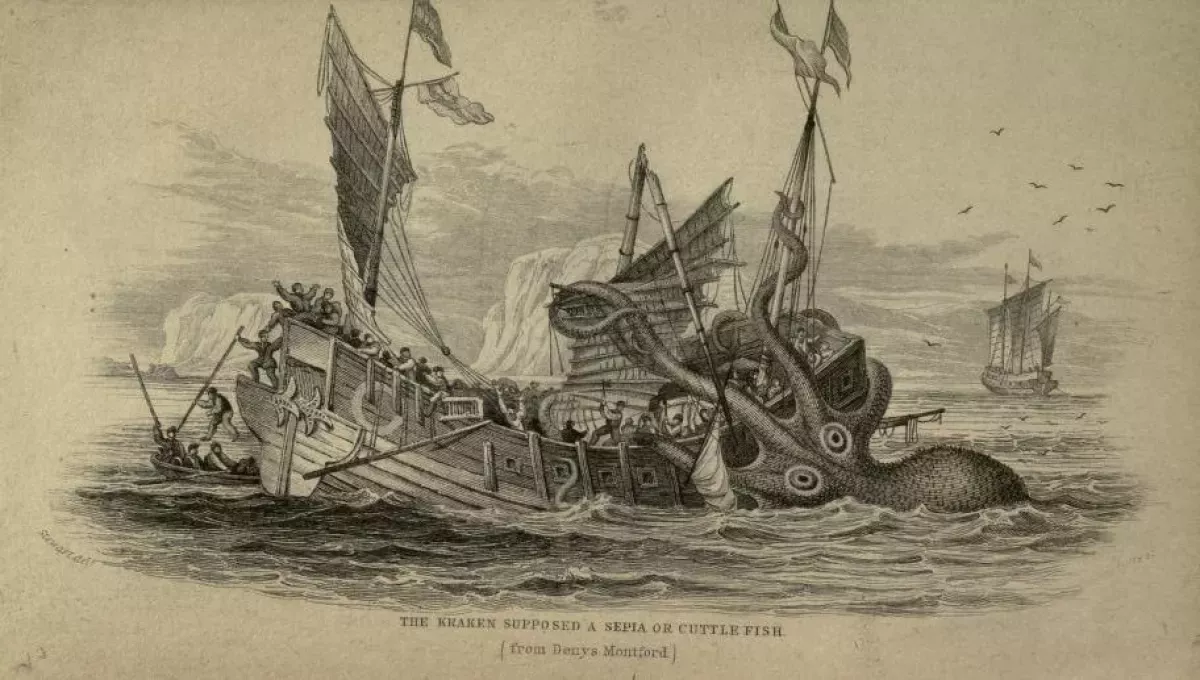1917: Hafgufa translation
In 1917, an English translator of the King's Mirror opted to translate 'hafgufa' as 'kraken', linking the two mythical sea creatures.
1920: Kraken identification
In 1920, Finnur Jónsson favored identifying the kraken as an inkfish (squid/octopus) on etymological grounds, aligning with earlier descriptions and tales of giant sea monsters.
1920: Kraken origin skepticism
In 1920, Finnur Jónsson, having suggested that the Kraken was an inkfish, expressed skepticism about the idea that the kraken originated from the hafgufa.
1920: Horven name meaning
In 1920, Icelandic philologist Finnur Jónsson explained that 'horven' (another name for the monster) is an alternative form of 'harv' (harrow), suggesting that the name was inspired by the inkfish's action of seemingly plowing the sea.
1928: Cthulhu creation
In 1928, H.P. Lovecraft created the character of Cthulhu, serving as a modern depiction of the kraken, and embodying themes of horror and apocalypse.
1953: The Kraken Wakes novel
In 1953, John Wyndham's novel, "The Kraken Wakes" was published, marking a modern literary appearance of the kraken.
1981: Clash of the Titans film
In 1981, the film "Clash of the Titans" featured the Kraken, popularizing the mythical creature in cinema.
2006: Pirates of the Caribbean film
In 2006, the kraken was featured as Davy Jones' pet in the film "Pirates of the Caribbean: Dead Man's Chest".
2010: Clash of the Titans remake
In 2010, a remake of the film "Clash of the Titans" was released, again featuring the Kraken.
Trending

7 months ago Jane Fonda Stuns at Cannes Closing with Caged Heels and 3D Florals
1 month ago Drake London Suffers PCL Sprain, Out for at Least One Week.

Larry Page is an American entrepreneur and computer scientist who co-founded Google with Sergey Brin He is highly regarded for...

Makea Puka Nacua is a professional American football wide receiver for the Los Angeles Rams He played college football at...
4 months ago Trump Involved in Kennedy Center Honors Announcement, Surprising Staff with his appearance.

Lolita a novel by Vladimir Nabokov centers on Humbert Humbert a literature professor obsessed with Dolores Haze a -year-old girl...
Popular

Candace Owens is an American conservative political commentator and author...

Tucker Carlson is an American conservative political commentator known for...

XXXTentacion born Jahseh Dwayne Ricardo Onfroy was a controversial yet...

Ilhan Omar is an American politician currently serving as the...

Kashyap Pramod Patel is an American lawyer who became the...

Charles James Charlie Kirk was a prominent American right-wing political...

